×


We have detected your country as:
Please click here to go to the USA website or select another country from the dropdown list.
{image_1}Israel’s Antiquities Authority (IAA) archaeologists have uncovered a rare temple and religious figurines dating back some 2,700 years to the Judean period. The unique discoveries were made at Tel Motza, west of Jerusalem, during emergency archaeological work taking place ahead of new road construction of the Tel Aviv–Jerusalem Highway 1.
Continue Reading »
{image_1}The Israel Museum, Jerusalem, premieres the world’s first exhibition on the life and legacy of Herod the Great, one of the most influential—and controversial—figures in ancient Roman and Jewish history. The landmark exhibition, “Herod the Great: The King’s Final Journey,” will present approximately 250 archaeological finds from the king’s recently discovered tomb at Herodium, as well as from Jericho and other related sites, to shed new light on the political, architectural, and aesthetic impact of Herod’s reign from 37 to 4 BC.
Continue Reading »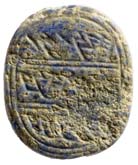
{image_1}A tiny personal seal was discovered in a 2,000-year-old drainage channel in the vicinity of Robinson’s Arch, close to the Western Wall. The seal is made of semi-precious stone and is engraved with the name of its owner: “Lematanyahu Ben Ho…” (…למתניהו בן הו). The rest of the inscription is erased. Personal seals in the First Temple Period were for the purpose of signing letters and they were usually set in a signet ring. The seals served to identify their owner, just as they identify officials today.
Continue Reading »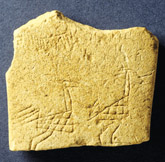
{image_1}A treasure of impressive prehistoric finds was exposed during the course of archaeological excavations conducted at Ein Zippori this past year by the Israel Antiquities Authority [IAA]. According to Dr. Ianir Milevski and Nimrod Getzov, excavation directors, “The excavation revealed remains of an extensive settlement belonging to the “Wadi Rabah” culture, common in Israel from the end of the sixth millennium and beginning of the fifth millennium BC.”
Continue Reading »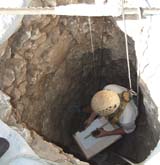
{image_1}The Israel Antiquities Authority (IAA) revealed an ancient well that was discovered in the Jezreel Valley. Examination of the well exposed two skeletal remains—one a woman thought to be about 19 years old, and the other, an older man. The well was constructed approximately 8,500 years ago. IAA archaeologists who have been lowered into the eight-meter-deep [26 feet] shaft have also found a variety of flint blades, arrow heads, stone implements, and animal bones.
Continue Reading »
{image_1}A monumental synagogue building dating to the Late Roman period (AD 300–500) has been discovered in archaeological excavations at Huqoq, an ancient Jewish village located approximately two to three miles [3–5 km] west of Capernaum and Migdal (Magdala) in the Galilee. The excavations are being conducted by Jodi Magness of the University of North Carolina at Chapel Hill and David Amit and Shua Kisilevitz of the Israel Antiquities Authority.
Continue Reading »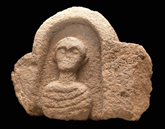
{image_1}A basalt burial stone with an embossed image of a man was unearthed during this summer’s 13th season of digging at Susita-Hippos, which overlooks the east side of the Sea of Galilee.
Continue Reading »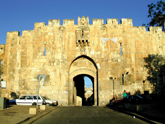
{image_1}A large part of the Israel Antiquities Authority’s job is the work of conservation. Over the past five years, they have been working meticulously to conserve and rehabilitate the gates and walls of Jerusalem’s Old City, one of the most important monuments in Jerusalem. The latest is the impressive Lions Gate in the eastern wall, which was badly in need of repair.
Continue Reading »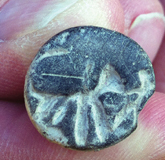
{image_1}“And the Spirit of the LORD came mightily upon him, and he tore the lion apart…” (Judges 14:6a).
Tel Aviv University researchers, led by Professor Shlomo Bunimovitz and Dr. Zvi Lederman, recently uncovered a seal, measuring 15mm (about a half-inch) in diameter, which depicts a human figure next to a lion. The seal was discovered at the archaeological site of Beit Shemesh, located between the biblical cities of Zorah and Eshtaol, where Samson was born, flourished, and was finally buried—this according to the book of Judges [chapters 13–16].
Continue Reading »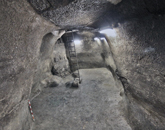
{image_1}These days, if a week goes by and we haven’t heard an announcement of some interesting archaeological find somewhere in Israel, it feels like a rather lack luster archaeological week. Such is the frequency of finds all over the country that each subsequent discovery seems to outshine the previous ones.
Continue Reading »All logos and trademarks in this site are property of their respective owner. All other materials are property of Bridges for Peace. Copyright © 2025.
Website Site Design by J-Town Internet Services Ltd. - Based in Jerusalem and Serving the World.